See how architects reinterpret the tropical house with concrete as an endearing protagonist.

May 12th, 2021
Most residential properties in Singapore are constructed out of concrete for the latter’s strength, durability, fire resistance, noise control and economic value. The most common being used are cinder blocks and concrete bricks. But most of the time, they are plastered and painted over for a smooth finish – altering their character altogether.
In the attempt to reimagine the tropical house we currently know, several Singapore architecture firms used concrete as an endearing protagonist – allowing its tactile quality and material character to shine in its raw form. Far from the spartan and industrial connotation that concrete is stereotyped as, these residential properties are proof that the dusty grey building material is more versatile than we give it credit for.
To counter the small plot, ip:li Architects elevated the house on columns, creating an open landscaped ground floor entertaining space that connects the outdoors to the indoors. Concrete was used as the single material to define the lower part of the house for a raw aesthetic that blends with the vegetation. The walls and columns were also created using board marked off-form concrete, which picks up on the textures and imperfections of the timber form-work beautifully. This is most evident at the grand staircase, which sets the tone for the curvature found throughout the interiors. This house won the Building of the Year accolade in the SIA Architectural Design Awards 2019. See this project in its entirety here.


Concrete was used to accomplish the uniform tectonics of this semi-detached abode that abstracts the pitched-roof model. Though encased in a concrete shell from base to roof, an array of blockish apertures illumines the interiors with a filigree of natural light. The shell extends on the longitudinal side to envelop the semi-indoor swimming pool and reflects latticed shadows onto the pool’s surface. The design, ergo, creates an inward-looking house with an external screen, which not only controls the sun but also views in and out of the house. With timber or metal screens more commonly employed by local homeowners to achieve a similar effect, the materiality is refreshing. It grants the house robustness but the generous openings avoid reticence. See this project in its entirety here.
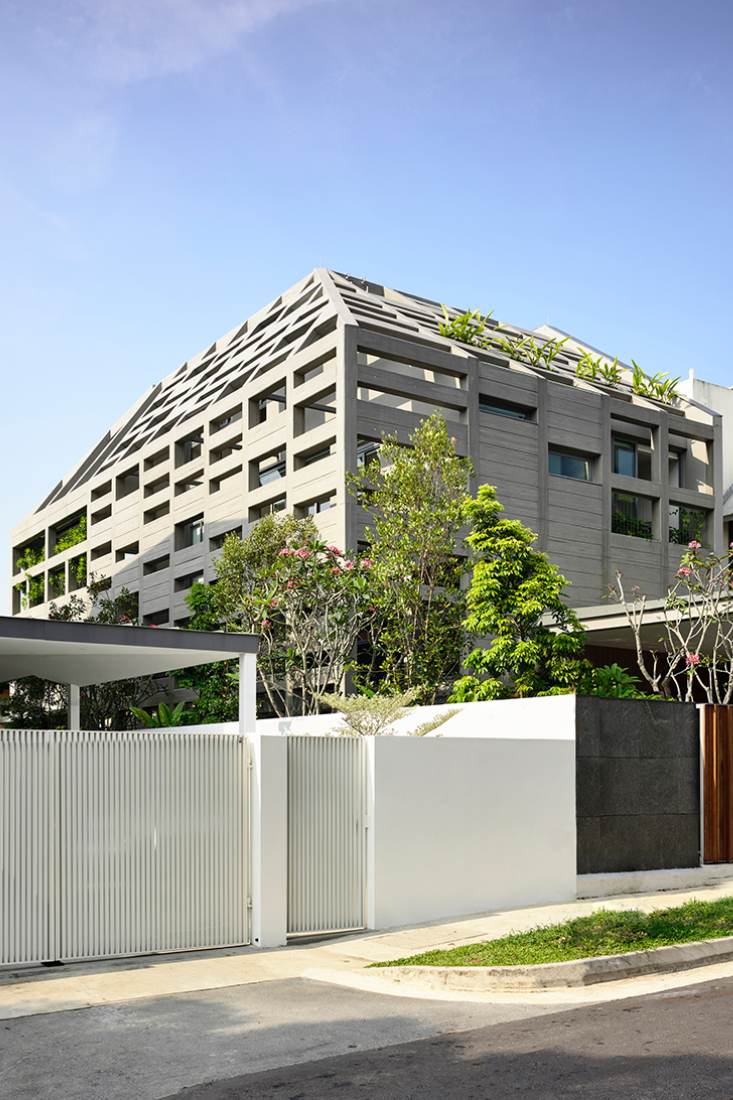
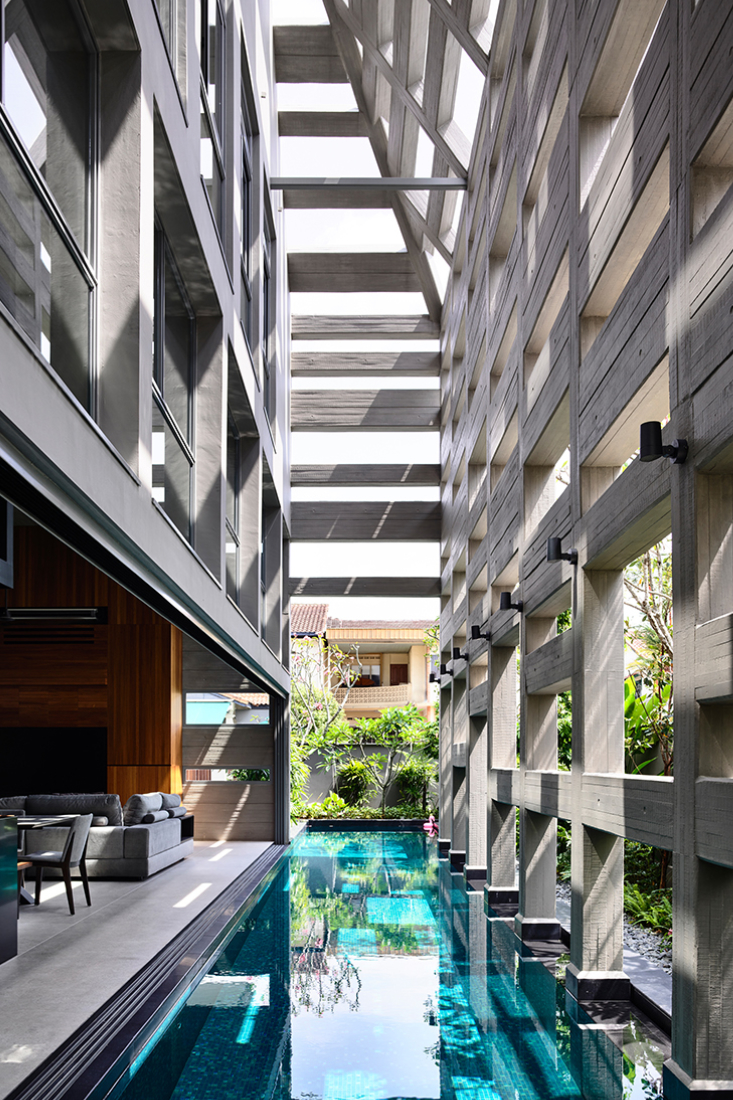
Board-form concrete defines the house externally and internally – the horizontal bands of rough texture endowing the surfaces with a three-dimensionality and perpetuating a cave-like ambience. The building’s reticent shell shields noise from a nearby highway, inquisitive eyes and the elements. Apertures on the front facade are dutifully screened while openings in the south facade (facing a nearby neighbour) are carefully calibrated. A narrow slit window above the lap pool brings light in as it creates the illusion of levitation. Not unlike many of Formwerkz Architects’ ouvre of introverted houses, nature is woven into or appropriated or abstracted to be part of the indoors, bringing colour to the grey interiors. See this project in its entirety here.


INDESIGN is on instagram
Follow @indesignlive
A searchable and comprehensive guide for specifying leading products and their suppliers
Keep up to date with the latest and greatest from our industry BFF's!

Welcomed to the Australian design scene in 2024, Kokuyo is set to redefine collaboration, bringing its unique blend of colour and function to individuals and corporations, designed to be used Any Way!
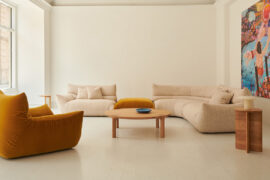
A curated exhibition in Frederiksstaden captures the spirit of Australian design
The new range features slabs with warm, earthy palettes that lend a sense of organic luxury to every space.

For Aidan Mawhinney, the secret ingredient to Living Edge’s success “comes down to people, product and place.” As the brand celebrates a significant 25-year milestone, it’s that commitment to authentic, sustainable design – and the people behind it all – that continues to anchor its legacy.
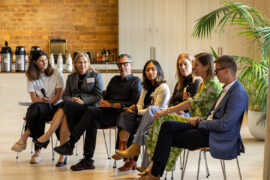
In this comment piece by Dr Matthias Irger – Head of Sustainability at COX Architecture – he argues for an approach to design that prioritises retrofitting, renovation and reuse.
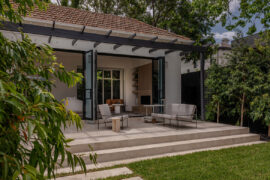
Through experience and with a passion for great design, Biasol is making gentle and perfect waves on the landscape of design.
The internet never sleeps! Here's the stuff you might have missed
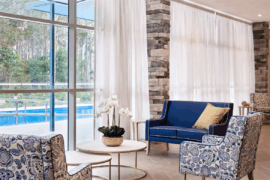
Inspired by an unthinkable design challenge on Sydney Harbour, Materialised’s ingenuity didn’t just fuse acoustic performance with transparent finesse – it forever reimagined commercial curtain textiles by making the impossible possible.

Through experience and with a passion for great design, Biasol is making gentle and perfect waves on the landscape of design.
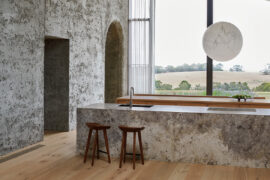
The INDE.Awards 2025 has named House on a Hill by Leeton Pointon Architects and Allison Pye Interiors as the winner of The Interior Space category, presented by Tongue & Groove. This multigenerational country home on Bunurong Country redefines residential architecture and design with its poetic balance of form, function, and sanctuary.